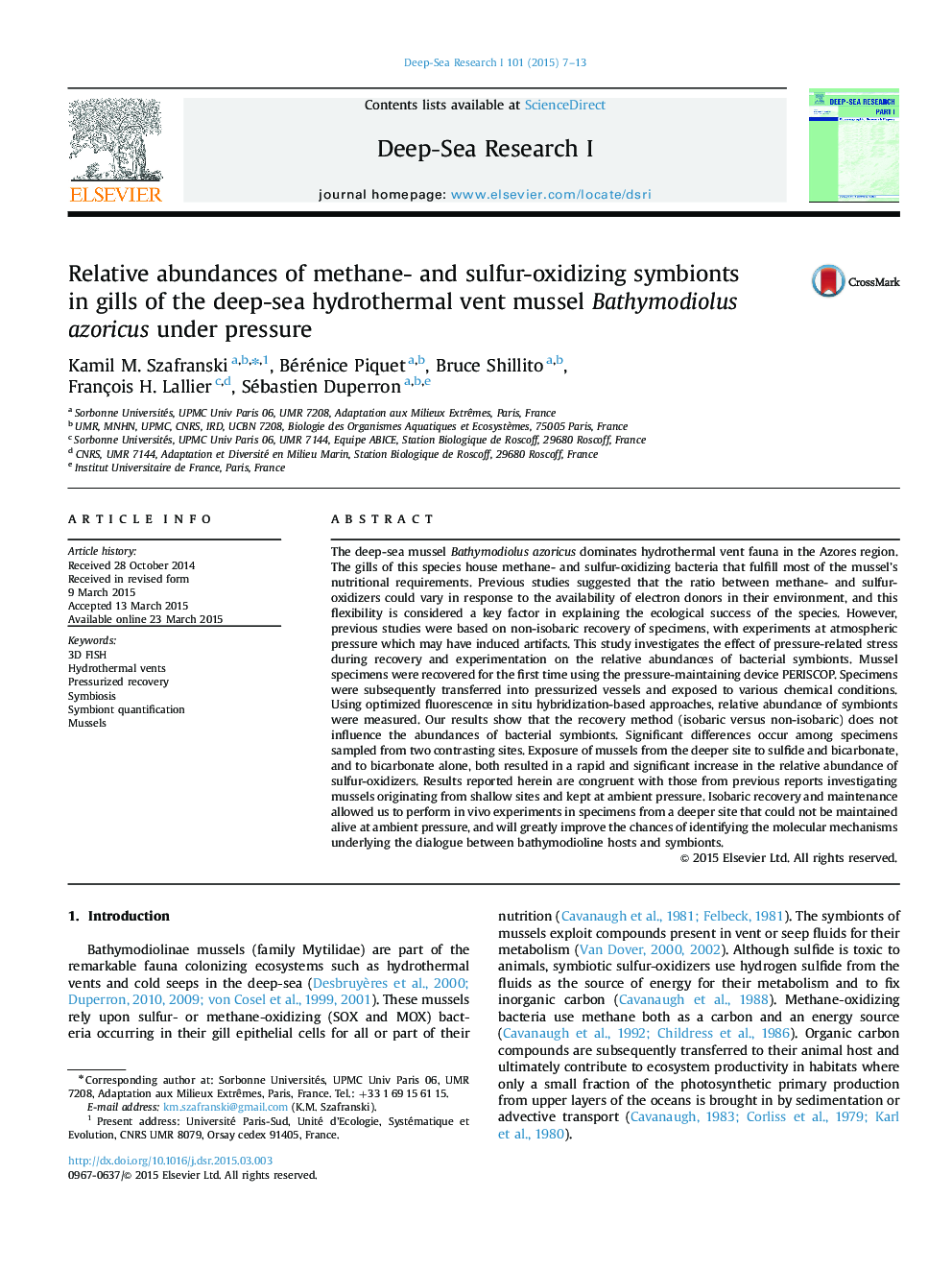| Article ID | Journal | Published Year | Pages | File Type |
|---|---|---|---|---|
| 6383519 | Deep Sea Research Part I: Oceanographic Research Papers | 2015 | 7 Pages |
â¢We investigate the dynamics of bacterial symbionts of a deep-sea vent mussel using FISH.â¢We compare isobaric and non-isobaric sampling procedures.â¢Live specimens were exposed to several treatments in IPOCAMP pressurized vessels.â¢Sampling procedures did not significantly impact symbiont relative abundances.â¢Exposure to reduced sulfur resulted in dominance of sulfur-oxidizing symbionts in gills.
The deep-sea mussel Bathymodiolus azoricus dominates hydrothermal vent fauna in the Azores region. The gills of this species house methane- and sulfur-oxidizing bacteria that fulfill most of the mussel's nutritional requirements. Previous studies suggested that the ratio between methane- and sulfur-oxidizers could vary in response to the availability of electron donors in their environment, and this flexibility is considered a key factor in explaining the ecological success of the species. However, previous studies were based on non-isobaric recovery of specimens, with experiments at atmospheric pressure which may have induced artifacts. This study investigates the effect of pressure-related stress during recovery and experimentation on the relative abundances of bacterial symbionts. Mussel specimens were recovered for the first time using the pressure-maintaining device PERISCOP. Specimens were subsequently transferred into pressurized vessels and exposed to various chemical conditions. Using optimized fluorescence in situ hybridization-based approaches, relative abundance of symbionts were measured. Our results show that the recovery method (isobaric versus non-isobaric) does not influence the abundances of bacterial symbionts. Significant differences occur among specimens sampled from two contrasting sites. Exposure of mussels from the deeper site to sulfide and bicarbonate, and to bicarbonate alone, both resulted in a rapid and significant increase in the relative abundance of sulfur-oxidizers. Results reported herein are congruent with those from previous reports investigating mussels originating from shallow sites and kept at ambient pressure. Isobaric recovery and maintenance allowed us to perform in vivo experiments in specimens from a deeper site that could not be maintained alive at ambient pressure, and will greatly improve the chances of identifying the molecular mechanisms underlying the dialogue between bathymodioline hosts and symbionts.
